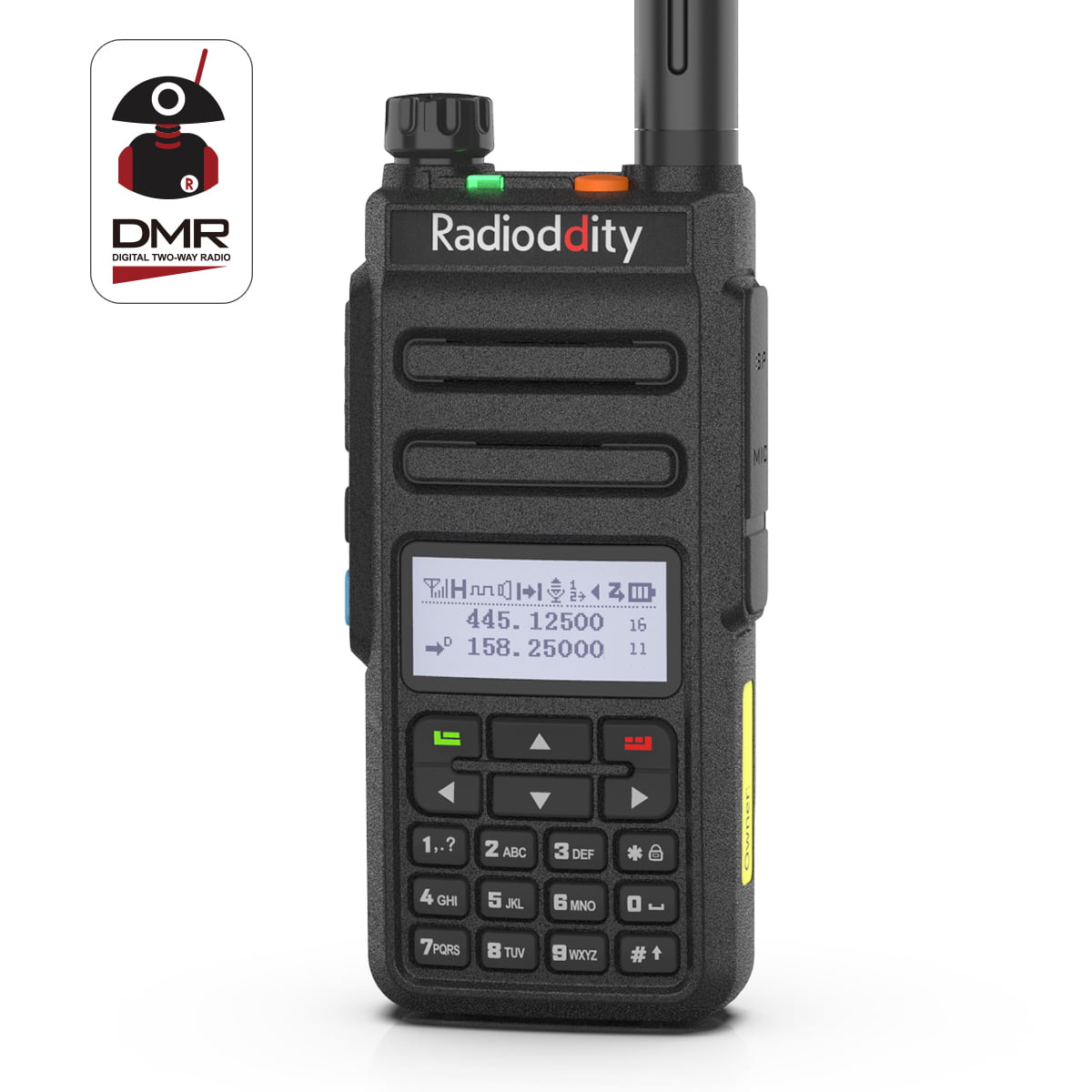
All amateur radio DMR systems are Tier 2, as are many business / commercial radio DMR systems.

Again, the AMBE+2 codec is used to turn speech into compressed data for transmission. Repeaters can be linked via the internet to form networks that can be as small as just two repeaters, or thousands of repeaters across the world. In addition to this, radios can be set to logical closed groups called ’talk groups’, which you can think of as ’virtual channels’. What this means is that two completely separate radio transmissions can be going through the repeater at the same time each radio takes turns in transmitting in short 27.5 millisecond bursts. With Tier 2 DMR, repeaters are used in a TDMA arrangement, with two "timeslots. Tier 2: Things start to get a bit more complicated here. The human voice is digitally sampled and compressed with the AMBE+2 codec, and then transmitted in this digital form to another radio. Tier 1: The simplest form of DMR is Tier 1, which is mainly used for simplex communications, with no repeaters. There are three "tiers" or levels of functionality for DMR systems. Motorola's SL7750 blurs the line between DMR radio and cellular mobile phone This is helped in no small part by the ready availability of DMR radio equipment at prices that rival traditional analog two-way radio, and that one of the biggest names in two-way radio, Motorola, are throwing their weight behind DMR. Personally, I think DMR will take the lead in both the commercial business & private two-way radio field as well as in ham radio. Hams have always been keen to leverage off existing commercial equipment, and it seems the most popular commercial system adopted presently is DMR. DStar took an early lead, but Yaesu is keen to take market share with their Fusion offering. In the ham radio arena, the picture is a little less clear. For business & private radio, DMR followed by NXDN is the two most popular choice. For emergency services and government communications, P25 is by far the most dominant, there’s no doubt about that. And guess what? Absolutely none of them are compatible!Ĭhoosing what digital voice standard you'll go with can be daunting. That doesn’t even consider the ham radio contenders, such as DStar, Fusion, FreeDV, some old offerings from Alinco & AOR and so on.

Yet, everyone has to have their own standard! Just take two-way radio digital voice systems for example: there’s P25 phase 1 and phase 2, NDXN, DMR, TETRA, OpenSky, Provoice, and dPMR, along with a whole host of legacy digital voice modes as well. "The nice thing about standards is there are so many to choose from." I love the ironic humor in this statement a standard should result in everyone doing things the same way in order to be compatible, and prevent having to constantly re-invent the wheel.


 0 kommentar(er)
0 kommentar(er)
